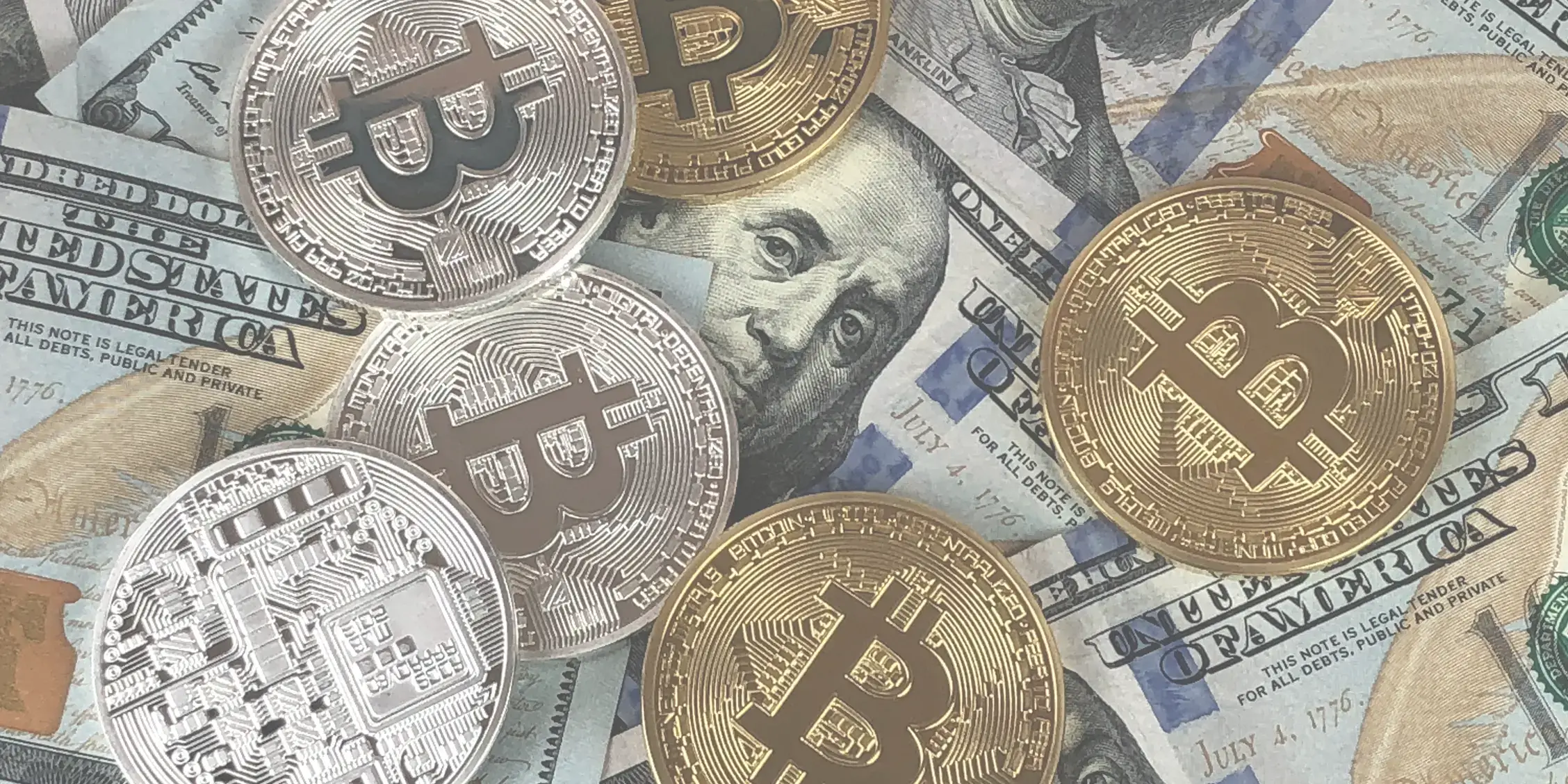Stablecoins are cryptocurrencies, in which the value of which is pegged, or tied, to that of another currency, commodity or financial instrument. In other words, Stablecoins are intended to be — and largely have been — less susceptible to volatility because they are backed by another asset. Theoretically, they serve as a safe-harbour to the daily fluctuations of all other cryptos like Bitcoin (BTC) or Ethereum (ETH)
Key Points:
The four main types of stablecoins are:
- Fiat-backed
- Crypto-backed
- Commodity-backed
- Algorithmic
What is the utility of stablecoins?
Bitcoin was the first and largest cryptocurrency by market cap. However, it remains highly volatile. For instance, Bitcoin's price rose from an intraday low barely above $4,000 in March 2020 to nearly $65,000 in November 2021 only to plunge almost 70% over the next eight months. This high volatility makes the coin extremely unsuitable for routine transactions like paying rent or buying and selling goods and services. That’s where stablecoins come in.
Stablecoins are, as the name implies, stable. Their values do not radically change. As a result, it makes them suitable for many purposes:
- A way to park money much like a money market fund
- It can be used to earn interest (staking)
- A more stable form to buy and sell products and services
- Easy to convert back to fiat
After all, we all have to report our taxes to our governments, right? No one wants to sell a product and suddenly find that we still owe the same amount of taxes at the time of the transaction. When we accept cryptocurrency, we take on a risk that its value may plunge; but our taxes due didn’t decrease. Our government accepts only fiat. To serve as a medium of exchange, a crypto currency that's not legal tender must remain relatively stable, assuring those who accept it that it will retain purchasing power in the short term.
What is fiat backed stablecoins?
For fiat-backed stablecoins, an entity issues an amount of coins representative of an actual amount of currency that they hold. For instance, an issuer may release 100 million coins backed by $100 million in United States Dollar (USD).
Fiat-collateralized stablecoins maintain a reserve of a fiat currency (or currencies) such as the U.S. dollar, as collateral assuring the stablecoin's value.
Popular stablecoins are:
- Tether (USDT)
- TrueUSD
Stablecoins can be redeemed for fiat at a 1:1 exchange ratio.
What are crypto-backed stablecoins?
Cryptocurrency can be backed by other cryptocurrencies. A good example was Luna-Terra version 1 or MakerDAO (DAI). Because the reserve cryptocurrency may also be prone to high volatility, such stablecoins are over-collateralized—that is, the value of cryptocurrency held in reserves exceeds the value of the stablecoins issued.
In the case of MakerDAO, the stablecoin is pegged to the U.S. dollar but backed by Ethereum (ETH) and other cryptocurrencies worth 150% of the DAI stablecoin in circulation. If there’s a “run on the bank” scenario, there is a 50% margin that will ensure that it won’t crumble. On the other hand, Luna-Terra version 1, did lose all its value. That’s because it was collateralised by another crypto. Bitcoin, being a volatile crypto asset, was not stable to support Luna-Terra. In addition, it was paying 20% interest for staking it on its “Anchor” protocol. No one knows how it able to pay 20% interest. It used the 20% to attract more new investors. The new investors, essentially, paid for the early investors’ interest payments. It’s like a Ponzi scheme.
Other crypto-backed stablecoins:
- USDD
- DAI
- TUSD
- USDC
- MakerDAO
What are commodity-backed stablecoins?
Commodity-backed stablecoins are collateralized using physical assets like precious metals, oil, and real estate. The most popular commodity to be collateralized is gold; Tether Gold (XAUT) and Paxos Gold (PAXG) are two of the most liquid gold-backed stablecoins.
It is important to remember that commodities are very cyclical. That is, they can rise and fall according to economic conditions. This means that in a recession, demand drops. Conversely, during a bull market economy, commodities rise. Again, volatility.
The idea of a commodity backed stablecoins comes from the old but not obsolete practice that a fiat currency like the British Pound or the United States Dollar was backed by physical Gold. It was known as the Gold Standard. This practise caused huge volatility when speculators tried to crash a currency.
What are algorithmic stablecoins?
Algorithmic stablecoins may or may not hold reserve assets. Their primary distinction is the strategy of keeping the stablecoin's value stable by controlling its supply through an algorithm, essentially a computer program running a preset formula (a.k.a., an algorithm)
This is essentially what Luna-Terra was. I have already explained in the crypto-backed stable coin section above. I will add that Luna-Terra tried to emulate what a central bank like the Bank of Canada or the U.S. Federal Reserve is. The difference is that real central banks have real demand for their assets and have tools at their disposal that can prevent a “Run on the Bank” scenario. These are:
- Enact currency controls
- Prevent banks from opening
- Stop the sale of their own currency
Where are we on stablecoins regulation right now?
Canada sees crypto as a commodity. Its gains and losses are taxed differently depending on whether you’re doing it as a business or a hobby.
The Australian Government does not consider Bitcoin and other cryptocurrencies as money or foreign currency. It sees it as an asset that attracts capital gains tax (CGT) and income tax. For taxation purposes, the ATO classifies all crypto users as either a trader or an investor. As of this article publishing, Australia's Financial Regulator Aims to Implement Crypto Regulation by 2025
In the UK, Her Majesty’s Revenue Service (HMRC) did not create new laws to tax crypto assets. Instead, HRMC has, since 2018, issued guidance on how to wrap the existing tax code around crypto. Its guidance outlines how cryptocurrencies are not considered currency or money, but property.
The US government is still trying to sort out how to treat crypto. Currently, any capital gains or losses have tax consequences and must be declared. The guidance can be confusing at best so it is suggested that you contact an accountant who is knowledgeable in crypto tax in the United States.
Professional guidance should be sought if you’ve dealt with any of these assets or processes over the last tax year. Every country has slightly or majorly different rules.
Related Articles




